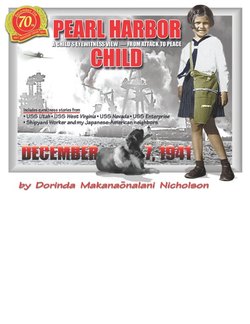Читать книгу Pearl Harbor Child - Dorinda MD Nicholson - Страница 5
На сайте Литреса книга снята с продажи.
INTRODUCTION
ОглавлениеYears ago, I was told by a member of the Pearl Harbor Survivor’s Association that I was too young to remember the attack, and I couldn’t have been a civilian survivor of Pearl because, “there were no civilians, much less children, living inside the Harbor.” He was wrong. I was there with my family, not on a burning ship, but close enough to see the burning ships anchored near our home.
Today, I still vividly remember watching the attack, I vividly remember the events, and I still remember his doubting comments. At first, I felt discounted and hurt by his skepticism. But now I am grateful. Grateful that it prompted me to ask lots of questions, do some research, and then write Pearl Harbor Child.
His doubting comment encouraged me to search for books, memoirs, and articles that might support the fact that civilians did indeed live in Pearl. When I couldn’t find any, I began to doubt myself. The evidence that there was a neighborhood of civilians on the Pearl City Peninsula unexpectedly surfaced on a map taken from the dead body of a Japanese mini-submarine pilot. His map targeted the position of each ship in the harbor, and also detailed something else: the streets of our small civilian community on the peninsula, including Jean Street, where we lived and where I grew up.
December 7, 1941 is “a date that will live in infamy,” according to President Roosevelt’s famous speech. And for me, and thousands of others, it’s true. Each year on that date, my thoughts always turn back to that incredible Sunday when bombs fell on Pearl Harbor.
As in earlier editions, my story begins with a Hawaiian legend. It shall be no different with this edition, because I want you to know the harbor before the bombs fell.
D.M.N.
